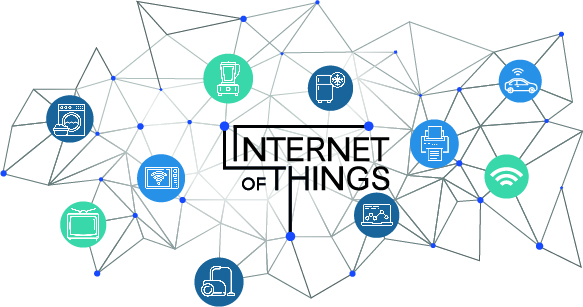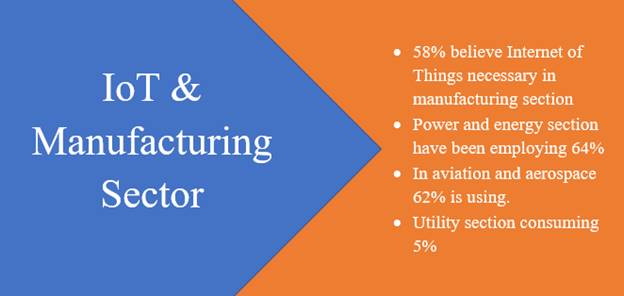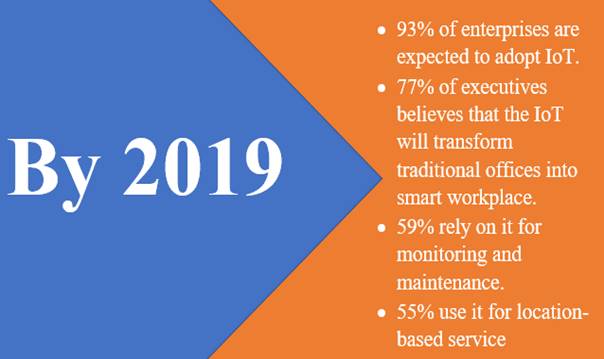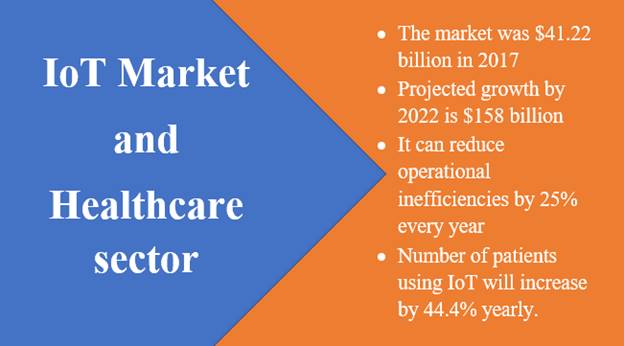Overview of IoT Statistics And Facts For 2020
IoT Statistics And Facts For 2020

The Internet of Things (IoT) is impacting human lives in a myriad of ways. It refers to a broad network of interconnected devices, with unique identifiers that can communicate and transfer data over a network without requiring any human interaction. The major function performed by IoT is gathering and transmitting data, but it is not limited to this.
Many devices can even process data. IoT makes use of many technologies like application programming interfaces (APIs), Big data management tools, Artificial Intelligence (AI) and machine learning, predictive analysis, radio-frequency identification, and the cloud. Some of the common IoT technology devices are energy meters, mobile devices, and smart appliances.
While analyzing the IoT statistics, it is pertinent to note that the figures vary widely across different research bodies and companies. Still, there is a general trend that the varying data arrives at, which can be used to analyze the IoT segment.
What are the growth statistics of IoT?

The internet market is growing at a fast pace. By 2020, the consumer and business spending on IoT devices is expected to reach $3 trillion.
- The number of IoT devices is projected to touch 20.4 billion in 2020. IoT is growing at a mind-blowing speed, and the Business Insider Insights predicts the number of IoT devices to reach 64 billion by 2025.
- We are cruising through an era of vehicle automation, and as per projections, 90% of automobiles will connect to the Internet by 2020. Even the vehicles on the road currently use IoT for various purposes ranging from sensors that transmit usage data to manufacturers to GPS, which facilitates navigation.
- Each second, a new 127 devices are getting connected to the Internet.
- The number of cellular IoT connections in 2023 is expected to be 3.5 billion.
What is the size of the IoT market?

The benefits of IoT and the increased business awareness of the same has pushed the IoT market strongly and has become a notable segment.
- The size of the IoT market is growing, and companies would be investing $15 trillion by 2025.
- Research by McKinsey Global Institute shows that, by 2025, the rapid growth of the IoT market is expected to create an economic impact of $4 to $11 trillion per year. Most of the companies that are presently using IoT are using it only modestly, like for smart sensors. However, technologies such as edge computing architecture and the expansion of 5G technology will increase the penetration of IoT applications.
- Home devices are already on IoT widely. The smart devices which can automate lighting, entertainment, or climate are already becoming common. An example would be the smart speaker devices that have already found its way to 31% of US broadband households in Q1 2019. It is a steep increase considering the meager 7% in 2017.
- By 2022, the home IoT market is projected to grow to $53.45 billion.
- The IoT health care market globally is likely to reach $140 billion in 2024. The annual growth of the IoT healthcare market is expected to be 12 percent yearly from 2017 to 2023. Some of the life-saving applications of IoT in healthcare are wearable sensors and telemedicine, which can help doctors to diagnose and treat difficult- to- reach areas.
- By 2020, 63% of installed IoT units will be from the consumer electronics sector.
- The global IoT market is expected to touch $1.7 trillion, of which the most significant component is consumer electronics. Hardware alone will contribute 35% of this market. The service sector will add 27%, and connectivity will contribute 22%. The software sector is the last with only 16% of the market.
- Business spending in the IoT market is expected to grow slightly more than consumer spending from 2015 to 2020. Business investment was $215 billion in 2015 and reached $832 billion in 2020. Consumer spending during the same period is expected to grow from $72 billion to $236 billion.
- Low-power, wide-area networks or LPWAN facilitates economical communications among large devices. Only 20% of the world populations get covered in the LPWAN network in 2017. It will have a further boost by 2022, with an exponent growth of 100%.
- The Internet of things is projected to double in the mobile market, mainly due to the large-scale Chinese deployment going on. By 2023, the cellular IoT connections will be touching 3.5 billion, out of which 2.5 billion is estimated to be from North-East Asia.
How does IoT affect the economy?

The Internet of things has a tremendous impact on the economy with the potential to generate a sizeable economic value. Enterprises benefit a lot from IoT by deploying IoT due to the innovation boost and IT effectiveness it brings.
- By 2025 IoT would have generated an economic value of $4 trillion to $11 trillion. The factory sector would be the most significant contributor of $1.2 trillion to $3.7 trillion. Smart cities, retail, health care, and custom production environments come close behind.
- A study by Morgan Stanley projects that by 2020, the industrial IoT market will reach $110 billion. By 2021 it is estimated to touch $124 billion. The key reasons for this growth of the Internet of things are improved productivity, optimal asset utilization, operational efficiency, and reduction in downtime.
- Various segments like Transportation & Logistics, Discrete Manufacturing, and Utility industries are expected to spend $40 billion each on IoT by 2020. In the coming two years, B2C commerce is expected to spend $25 billion on the internet of things platform while healthcare and process industries are going to be spending $15 billion.
- Most of the Internet of things based projects are for cost-saving rather than revenue generation. 54% of the projects are for cost-saving, while only 35% are for revenue growth. 24% of projects aim to improve security.
- The goal of enterprise usage of IoT varies from country to country. In China, 23% of enterprises deploy it for improving competitiveness. It is the same in countries like South Korea and Mexico. The US, UK, Australia, and France are already using IoT for cost reduction. IoT is also preferred by countries to improve business processes and to enhance the customer experience.
The usage of IoT across various sectors


Most of the industrial and business sectors are using the advantages of the Internet of things, and results from IoT are exceeding the expectations.
- Manufacturers consider IoT is essential to transform their business digitally. 58% believe that the Internet of Things is necessary for this. Power and energy have been employing 64% usage of IoT applications. It is the highest followed by aviation and aerospace using 62% and utilities consuming 5 %.
- Senior executives in all industries consider IoT to be critical for their business process. In 2018, more than 80% of the senior executives agreed with this, and the majority of them are from media, technology, and telecommunications industries. In the coming 12 months, 28% of executives are planning to invest in the Internet of things security.
- The real-world benefits gained by business from the Internet of things, in terms of efficiency and profitability, exceeds the expectation s by 16% to 17%. These results have been encouraging the top management to earmark more of their budget for IoT.
Investment in IoT and the statistics 2019, 93% of enterprises are expected to adopt IoT technology. 77% of executives believe that the Internet of things will transform traditional offices into a smart workplace. 59% rely on it for monitoring and maintenance and 55% for location-based services.- The industrial sector is also fast warming up to IoT. 92% of the organizations are estimated to have adopted IoT by 2019. 68% of the top management in the industrial sector prefer the Internet of things for monitoring and maintenance, and 54% utilize it for remote operations. IoT has proven to increase business efficiency, reduce operational risks, improved innovations, and better organizational visibility.
- The healthcare sector is expected to use IoT in a big way by 2019. As per the projections by this period, 87% of the organizations in the health care sector would be implementing IoT. The most common application of IoT in healthcare is patient monitoring, followed by imaging devices and X- rays.
- The usage of IoT is expected to increase in the retail sector as well. This sector recorded 49% IoT usage in 2017, which is projected to go up to 79% by 2019. IoT can help to personalize the store experience for the customers and also come to use in monitoring and surveillance. Retail executives consider improved customer experience as the leading benefit of IoT, followed by improved organizational visibility and higher revenue.
- The slowest sector to adopt IoT is the government sector, with only 68% of decision-makers projected to start using IoT by 2019. 60% of the usage of IoT is for accurate monitoring and maintenance, and 45% of usage is for location-based services. This sector can benefit by implementing IoT in terms of increased innovation, visibility across city, and efficiency.
The benefits that the Internet of things can offer are leading to a boost in the investment by different sectors in IoT. The Internet of things is becoming a priority in many organizations.
- USA is leading in the deployment of IoT operations, mainly due to the venture capital inflow. UK and Germany follow close behind. Out of the IoT start-ups in the 2012-2017 period, two-thirds were from the US.
- Samsung has 820 IoT patents to its credit and is the top patent holder. The other industry leaders in IoT patents are LG with 524 patents, followed by Huawei with 490 patents, Qualcomm with 485 patents, and Sony with 479. The majority of the patents are from consumer electronics and the telecom sector.
- The Azure IoT suite of Microsoft is preferred by 29% of developers to connect devices in their projects. 24% of developers prefer Google Cloud IT and Amazon AWS IoT by 19%. Cisco IoT Services come last with 13% developers preferring it. AWS is more popular in smaller organizations, while Google’s IoT cloud finds more takers in large organizations.
- By 2022, the IoT market in North America, which was $300 billion in 2017, is expected to grow to $500 billion.
- The worldwide IoT market in the automotive sector is projected to reach $104.2 billion by 2023. The connected cars by 2020 will be 220 million, and by 2040, 20% of the cars coming to the market will have IoT connections.

We cannot ignore the impacts of the Internet of Things happening around the world and in our daily life. Its influence is growing every day, and considering the prediction by Ericsson that you can expect IoT gadgets to outnumber mobile devices in 2018, IoT deserves big-time attention. The worldwide IoT market in the health care sector was $41.22 billion in 2017 and is estimated to reach $158 billion in 2022. IoT can reduce the costs due to operational inefficiencies by 25% every year. The number of patients using IoT devices will increase by 44.4% every year.- The worldwide IoT retail market was $14.28 billion in 2015, which a projection to touch $ 34.65 billion by 2020.
- The worldwide IoT market in the education sector is estimated to touch $11.3 billion in 2023.
- The banking and financial services market of IoT is estimated to reach $2.03 billion by 2023 from just $0.17 billion in 2017.
- The worldwide IoT manufacturing market was $10.45 billion in 2016 and is projected to reach $45.3 billion by 2022.
By 2022, the smart home market would have reached $53 billion. Driverless cars can result in a $5.6 trillion savings globally. By 2022, the number of smart meters will reach $1.1 billion. All these emphasizes the fact that organizations need to consider IoT while planning their investments to take advantage of the opportunities that it can offer. However, the successful implementation of IoT requires the companies to chart out a well-researched implementation plan with periodic modifications based on customer feedback.
More To Explore
Wearable Statistics And Facts For 2021
Industry report Overview of Wearable Statistics And Facts For 20211
Facebook live Statistics, Usage And Facts (2020 Report)
Industry report Overview of Facebook live Statistics, Usage And Facts
Web Hosting Statistics, Market share And Facts For 2021
Industry report Overview of Web Hosting Statistics, Market share And
Explore Related reccomendations
Mobile Vs Desktop Internet Usage Statistics 2021
- According to 0 users
Apps Statistics, Usage & Downloads (2020 report)
- According to 0 users
Twitter Statistics And Facts 2020
- According to 0 users
SMS Marketing Statistics And Facts For 2020
- According to 0 users


